Yes, of course, solar lights can charge inside your homes or conservatory. But you have to remember the solar lights that are effectively and efficiently charged when exposed to direct sunlight.
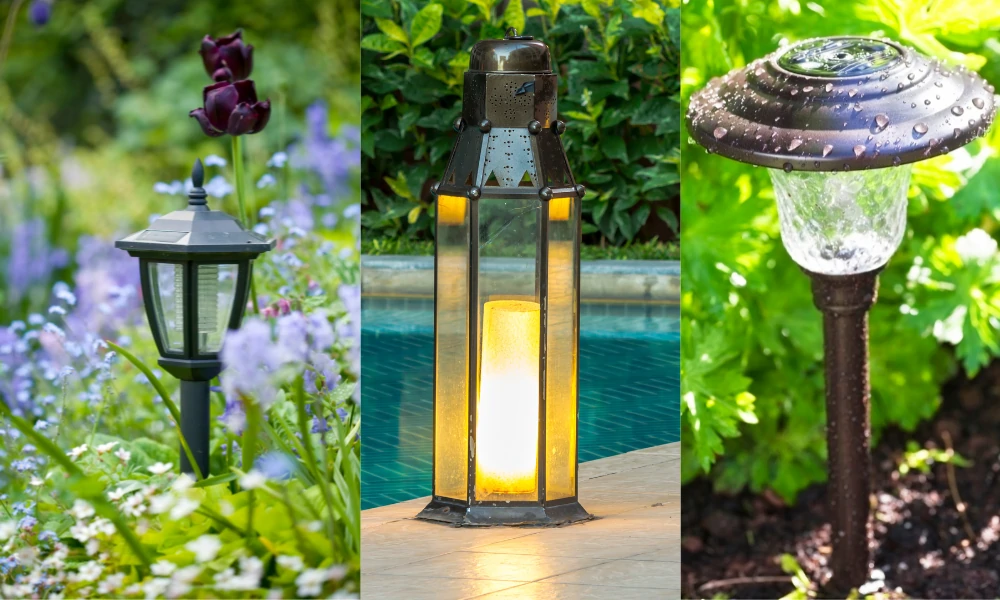
Indoor charging, whether through artificial lights or placing solar lights near a window, can not provide excellent performance because they are not strong as exposed to direct sunlight.
However, indoor charging can be beneficial in the winter or rainy season, as well as for other reasons. Before that, you have to make sure solar lights are placed in sunny spots and given enough time to recharge.
I have recorded the above video to check the difference in the charging status of solar lights indoors and outdoors.
During my experiment, I saw solar lights produce current even inside a house with a flashlight as the light source.
But there was a big catch. It’s the light intensity of the artificial light source.
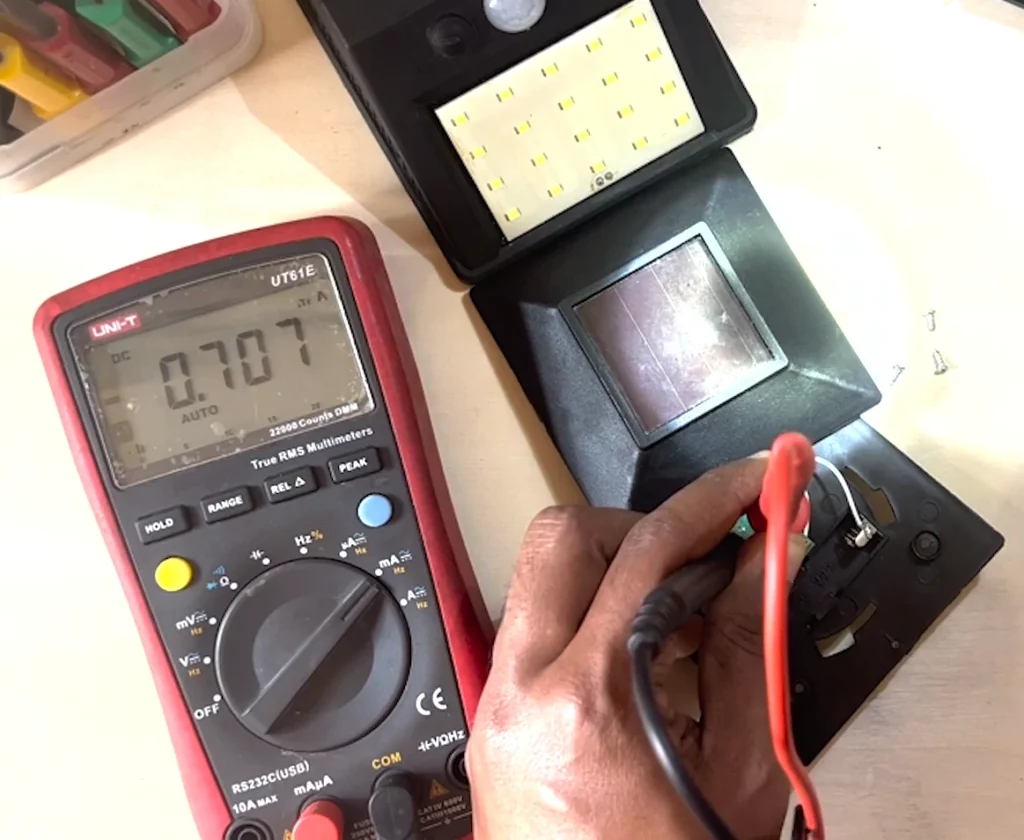
You can clearly see the current production directly from the solar panel of my garden solar light. It’s not even one milliampere range.
When I move this light to direct sunlight, this is my observation.
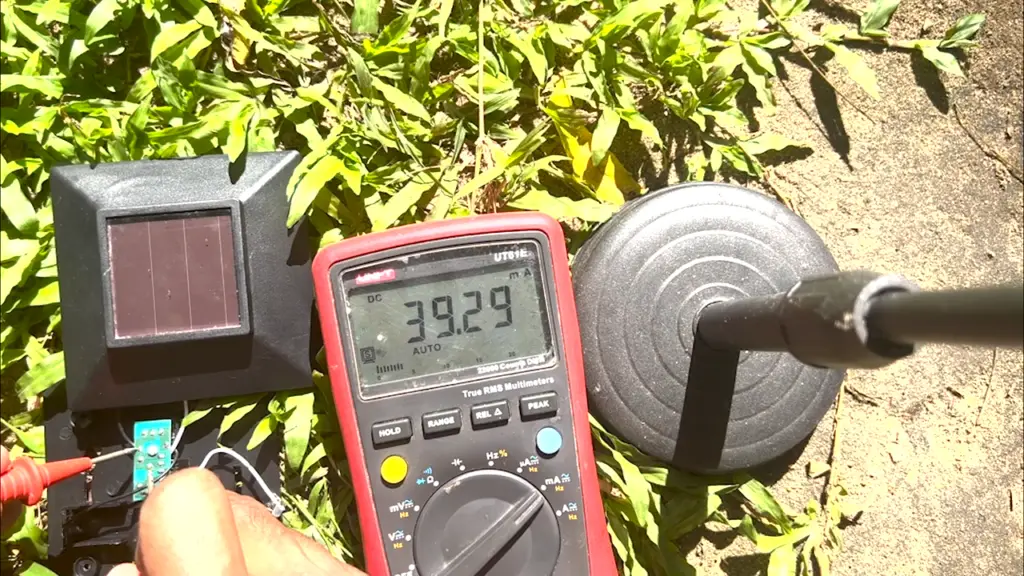
The difference is nearly 40X.
This means if we want to use indoor lights to charge a solar light, we need pretty much high intensity. Otherwise, your solar lights may not charge as much as needed or take a longer time to charge.
What are the alternative power sources for charging solar lights?
1. A solar light is placed near the window.
That is a very easy method; you can try it at home. You must place your solar panel or solar cell portion near the window.
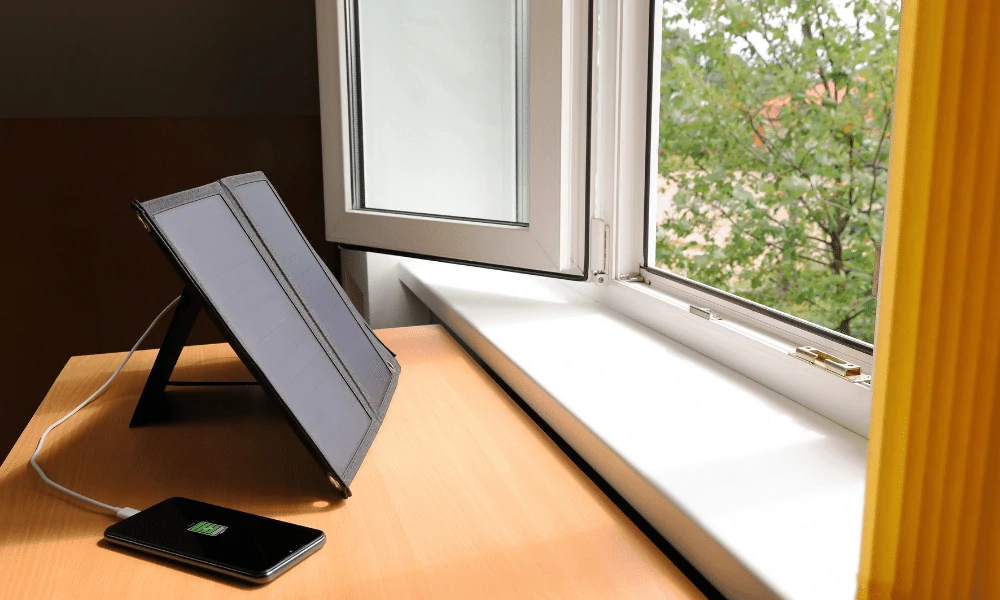
Remember to keep it in the south-facing window, which can easily catch up with higher solar radiation. That is useful for quickly recharging your solar lights.
Keep in mind: Avoid the solar panels obscuring the trees and other buildings. Because the shade from surrounding features decreases the charging efficiency.
2. Use incandescent lights to provide power for recharge solar lights
The next alternative is incandescent bulbs. All of you can easily find your homes. Keep your solar panel or solar panel portion in the light near the incandescent light.
If you wonder how just placing it near the bulb can charge the lights. It is a simple mechanism that has already been explained. The incandescent bulb, especially the tungsten bulb, emits near-infrared radiation due to its power generation.
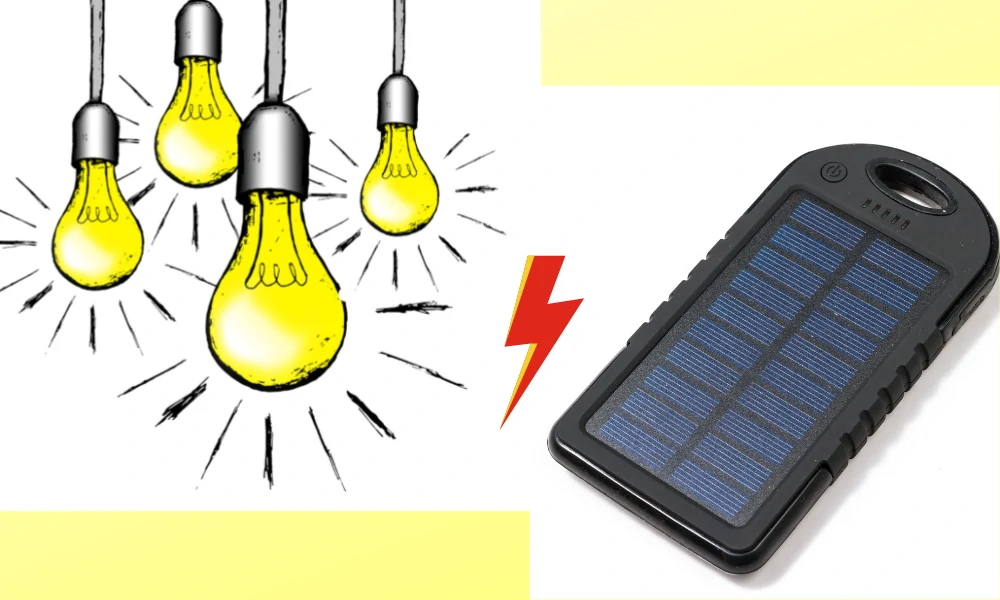
Near-infrared waves substitute for solar radiation, and silicon materials in solar panels and solar lights are utilized for charging and the occurring photovoltaic effect.
You have to keep solar lights on for a few hours, and sometimes all types of lights are incompatible with this method.
3. Use of LED light source as an alternative to sunlight
This is also the same as the previous option of incandescent light. You must place the solar lights under the LED light source for a few hours. Remember that this method also only works with some solar lights.
LED bulbs also emit a spectrum of visible light, infrared, and ultraviolet waves similar to solar radiation. The color temperature of the solar radiation is near 5900K.
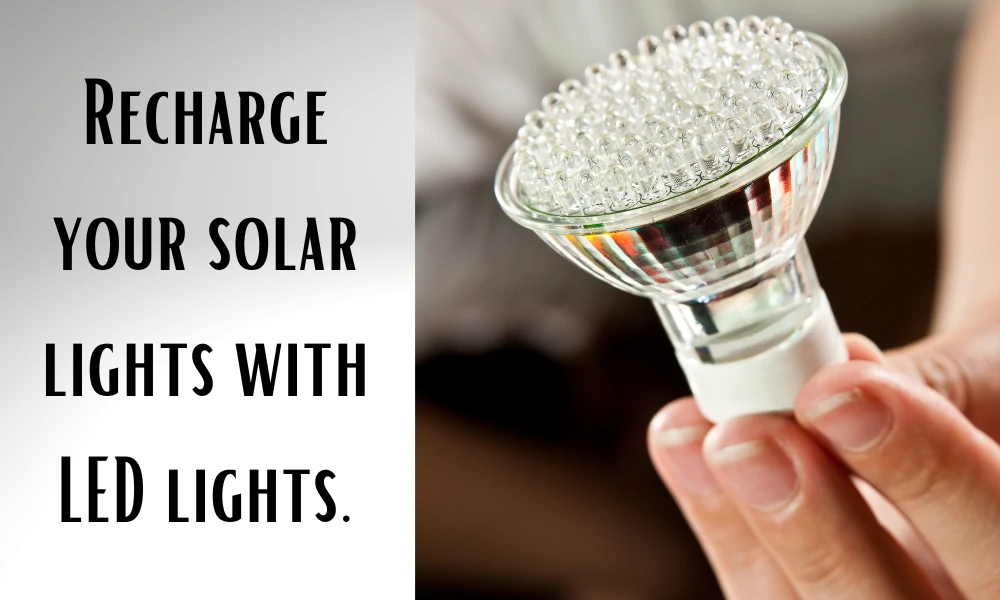
Therefore LED lights similar to this colour temperature are more effective for charging as well as the work of solar panels.
But still, solar panels can’t absorb ultraviolet and infrared radiation, and they only absorb visible spectrum range. Therefore, higher, warmer or cool-coloured LED bulbs can’t generate much power.
4. Use a solar charger to recharge your solar lights
A solar charger is another option you have. It is a device that specifically builds up to charge batteries.
Here, solar radiation is used to generate electricity. First, you must consider whether the solar charger is compatible with your solar light batteries. Otherwise, you have to go for another option.
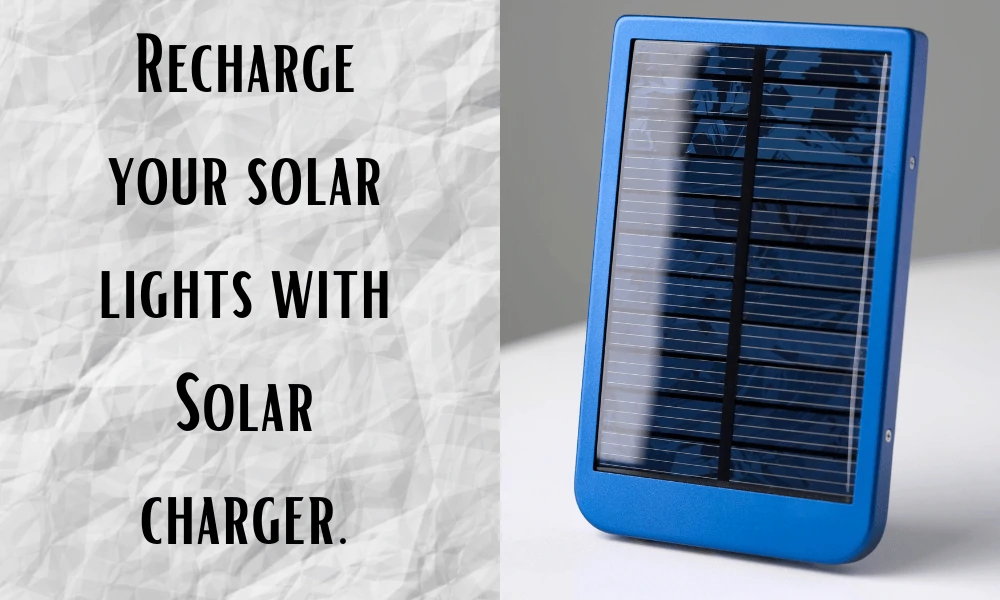
Here, place your solar panel charger in a sunny area and it will absorb solar radiation and recharge your battery in solar lights.
5. Use a mirror to reflect solar rays from outside
A mirror can also use to recharge your solar lights. It is a very easy, cost-effective method. First, you have to find the best sunny spots in your garden and place mirrors in those sunny locations.
The advantage is that sunny spots can provide bright sunlight for the longest period of time during the day. After placing the mirrors, you can adjust the best angle to work with the sunlight.
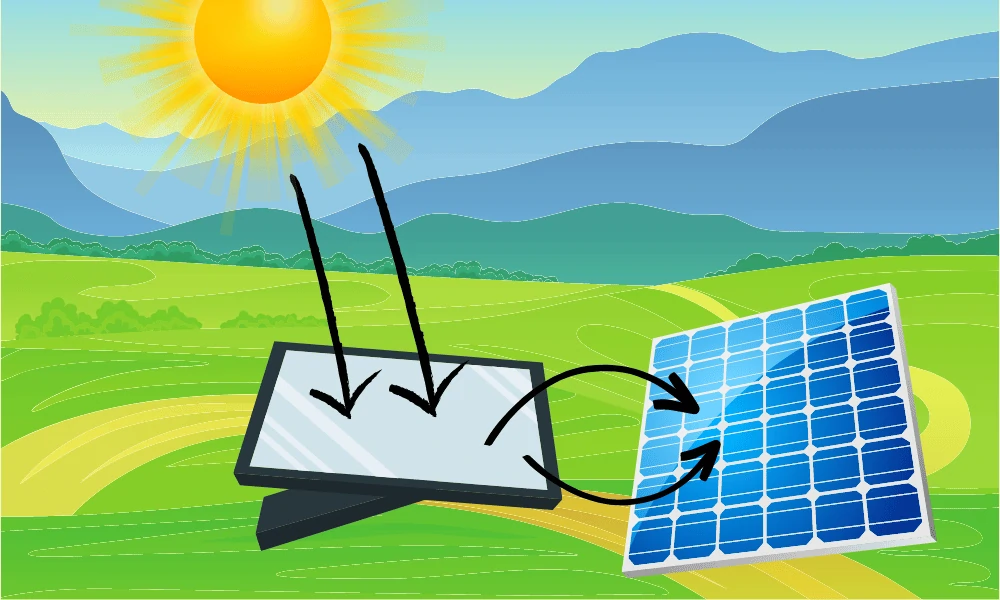
Once you place it, you can determine whether that angle is working. If it is not working, you can try other angles to trap more sunlight to maximize the output from the mirror.
You can use a larger mirror to enhance the surface area of falling sun rays for better output. Remember not to use mirrors that will cast a shadow on the solar panel because this will waste our time.
Furthermore, according to your solar panel size or solar light size, you must decide how many mirrors you need for the work.
Warning: When using mirrors to charge your solar lights, remember that there is a risk of mirror breakdown and that it may occasionally damage your solar panel or solar lights. Also, there is a danger of fire when using mirrors.
6. Use a reflector to improve charging efficiency
The reflector or some specific surface or material is used to balance or redirect the solar radiation striking the panel. This is one of the greatest instruments for filling or reflecting light into and out of the solar panel.
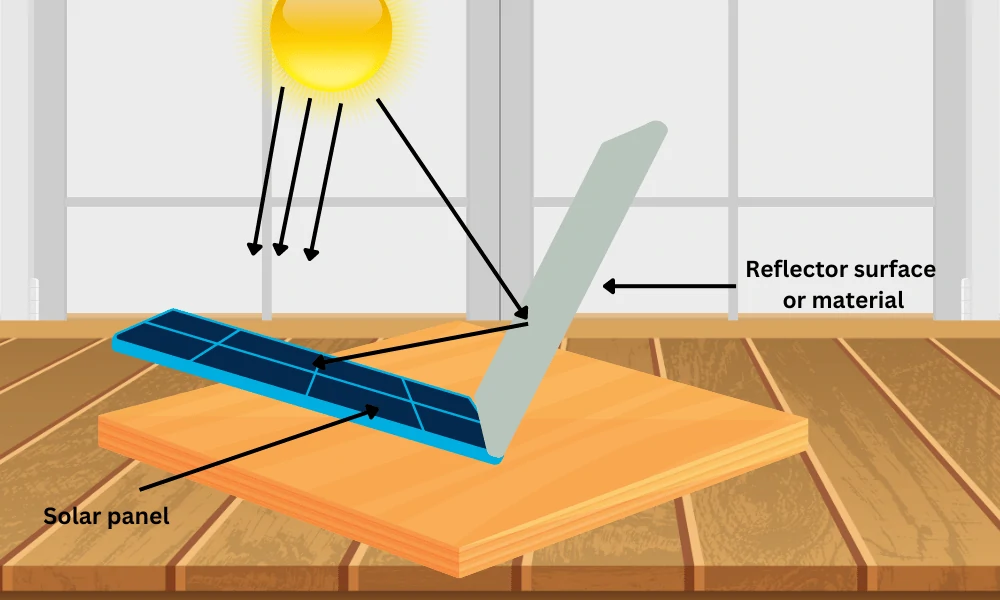
Here you have placed a reflector behind the solar panel. It will help to bounce the light again to the solar panel with minimizing the reflection.
Therefore, we can quickly recharge our solar lights using the reflector.
7. Use a magnifying lens to focus sun rays into the solar panel
In our childhood, most of us used magnifying lenses to focus on sunrays to burn specific objects we wanted. Here also, we use a similar mechanism for recharging our solar lights.
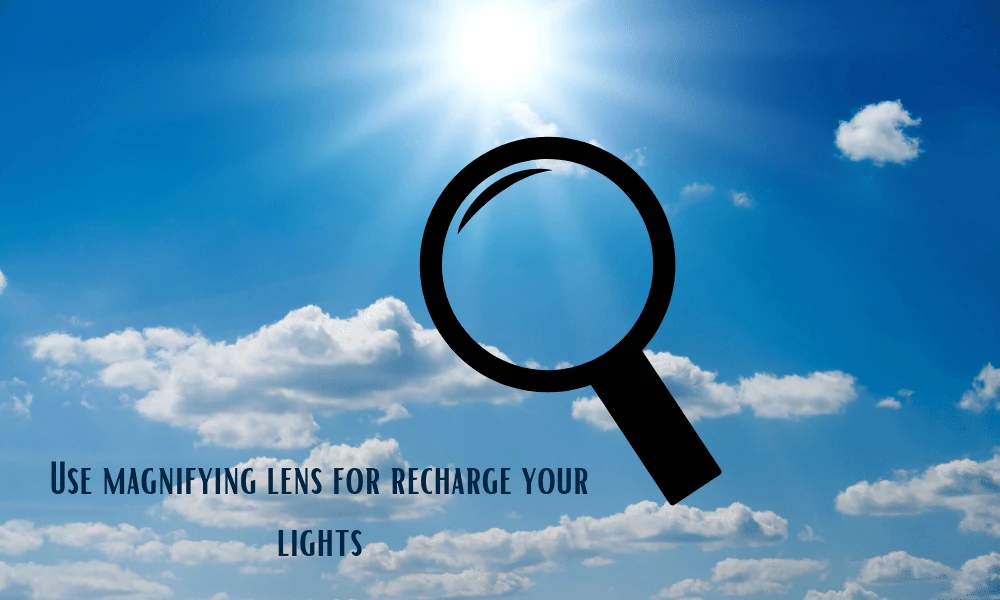
Here also, you need to place the lenses above the solar panel and focus the sun rays falling into the panel. Magnifying lenses intensify the heat falling into the focus area, which will help to speed up the charging rate of solar lights.
You must wait a few hours to properly charge your batteries.
8. Use the USB charger for indoor solar light charging
You can check if your solar lights are compatible with a USB charger.
This USB charger or USB port can easily plug into the socket and quickly recharge during cloudy or winter seasons.
This method is somewhat costly, but you can also try it in dire situations.
9. Use of black color surface or paper to absorb more energy
You can use black colour surface material like black paper or something for faster the charging rate of your solar lights.
Here, you have to place black-colored paper behind your solar light or solar panel.
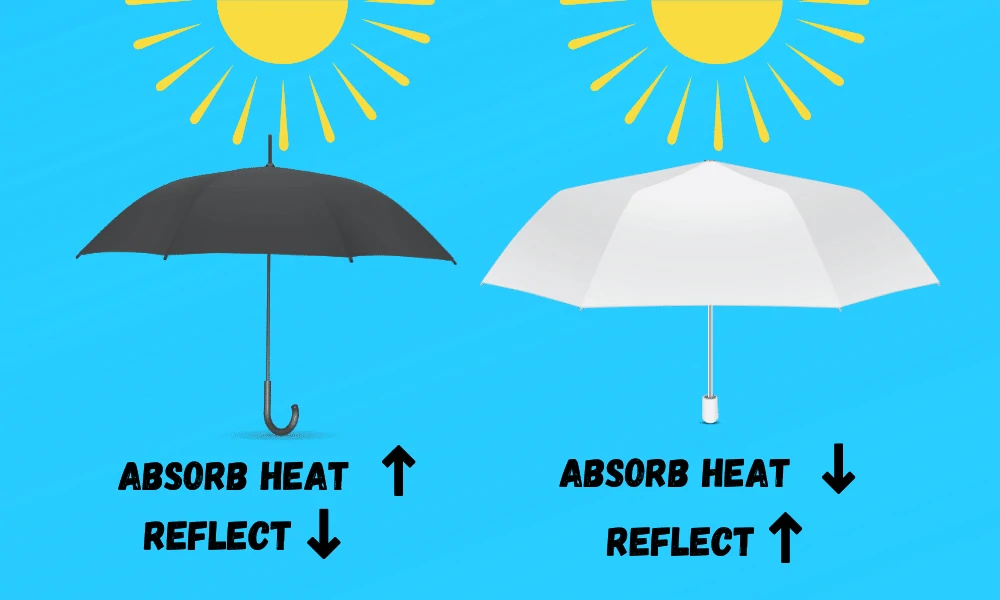
Black color surfaces or materials are excellent heat absorbers because they can absorb all wavelengths of light and transform them into heat. They produce heat energy that is used to warm the material or surface.
In this scenario, black paper produces more heat energy while absorbing solar radiation. That energy can be used to accelerate the charging process.
What are the factors needed to consider choosing artificial lights to charge indoor solar lights?
- Light intensity: The charging efficiency of solar lights will be affected by the light intensity of artificial lights. Therefore stronger artificial light sources are more suitable for efficient indoor charging.
- Light spectrum: For choosing an artificial light for indoor solar light charging, you must consider its spectrum. Because different light sources emit different light spectrums. Such as LED and fluorescent bulbs are more efficient at indoor charging than incandescent bulbs.
- Energy consumption: Incandescent bulbs need more energy typically than LED and fluorescent bulbs. Therefore incandescent bulbs are not appropriate for indoor charging. Therefore low energy consumption light sources are more suitable for indoor charging. Otherwise, we have to spend more energy as well as more cost.
- CRI index of light: you are choosing an artificial light for indoor solar light charging more preferred on their CRI (Colour Rendering Index). LED and fluorescent lights have higher CRI and they can produce a more balanced light spectrum. Because they can ensure efficient and effective indoor charging.
What are the pros and cons of solar lights charging indoors?
Pros
- Protected from the weather: Indoor solar light charging helps us protect the solar lights from bad weather such as rains, winds, and snowfall. Furthermore, it can reduce the potential damages from bad weather and increase the life span of solar lights.
- Easy to install: Solar lights charging indoors are easier to install than those charging outdoors as well as easy to do with sunny spots or artificial light sources.
Cons
- Decreasing the charging efficiency: Indoor lighting exactly reduced the charging efficiency more than direct sunlight. Because artificial lights have a lower intensity of radiation than sunlight, their charging performance will be diminished, and it will take too long to recharge the solar rays.
- Limited Charging Options: Indoor charging can limit the options we have for charging by limiting where we can install our lights and how we can use them. For example, we are unable to charge solar lights installed in hard-to-reach locations as well as on tall poles.
- Dependent on artificial lights: Indoor charging means we have to directly depend on artificial lights. But artificial lights are not always more reliable than natural lights. Sometimes power shortages or other breakdowns can reduce or fail the charging of solar light

Eng. Matthew Joseph Nandirio is the Founder of walkingsolar.
After graduating from the University of Houston in 2002, matt started working as a Solar Electrical Engineer for several multi-national solar energy companies.
He has a wide range of experiences including solar system requirement analysis, planning, maintaining, debugging and even solar device development through research.
He now shares his 20 years of expertise through his articles on the walkingsolar website.
Further, he is also the author of two books on Solar Technology, “Solar Power for Villages” and “DIY Solar System for Dummies”.
